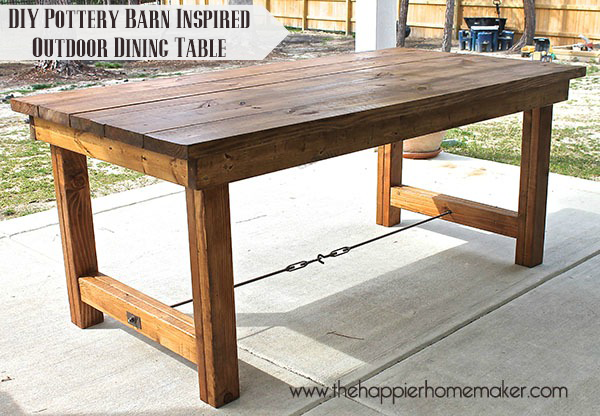
Free plans to make a farmhouse table with just a drill, saw and countersink bit! No pocket holes required! Step by step plans from ana-white.com
Dimensions

Dimensions shown above. NOTE Plan base is 6" wider than shown in pictures.
Preparation
Shopping List
- 6 - 2x4 @ 8 feet long (cut longest boards first to conserve lumber)
- 3 - 2x2 @ 8 feet long
- 5 - 2x8 @ 6 feet long
- 2 1/2" exterior star bit screws (Can use interior screws for interior projects)
- Exterior Wood Glue (again, can use interior wood glue for interior use)
- 2 1/2" pocket hole screws are optional if you have a pocket hole jig
- 2" brad nails (galvanized for exterior)
Cut List
- 4 - 2x4 @ 24 1/4" (End Stretchers)
- 8 - 2x4 @ 28 1/2" (Legs)
- 2 - 2x4 @ 30 1/4" (End Aprons)
- 2 - 2x4 @ 69" (Side Aprons)
- 7 - 2x2 @ 30 1/4" (Tabletop Supports)
- 5 - 2x8 @ 72" (Tabletop Boards)
General Instructions
For long term durability and more professional results, I recommend using a pocket hole joinery system for wood joints. Here is a video with tips for using a pocket hole jig:
Instructions
Step 1
Step 4
Step 6
Step 7
Step 8
Add hardware to base - check out the Happier Homemaker for more details on how they did that.
Finishing Instructions
Preparation Instructions
Fill all holes with wood filler and let dry. Apply additional coats of wood filler as needed. When wood filler is completely dry, sand the project in the direction of the wood grain with 120 grit sandpaper. Vacuum sanded project to remove sanding residue. Remove all sanding residue on work surfaces as well. Wipe project clean with damp cloth.
It is always recommended to apply a test coat on a hidden area or scrap piece to ensure color evenness and adhesion. Use primer or wood conditioner as needed.
It is always recommended to apply a test coat on a hidden area or scrap piece to ensure color evenness and adhesion. Use primer or wood conditioner as needed.


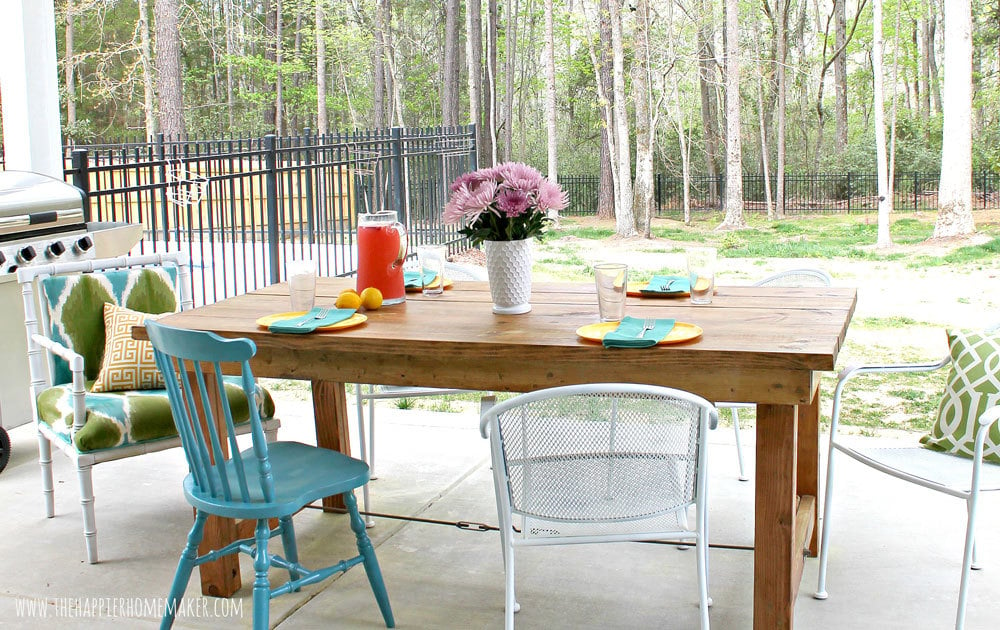
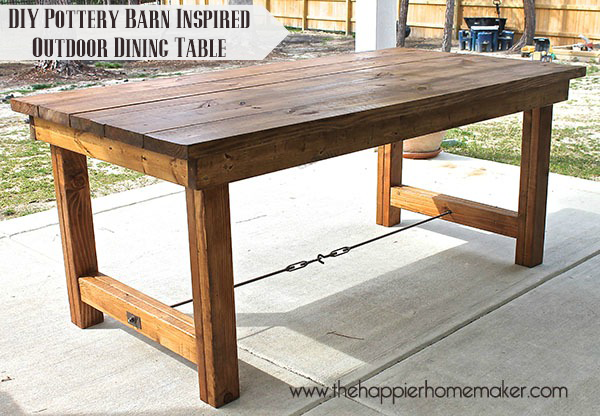
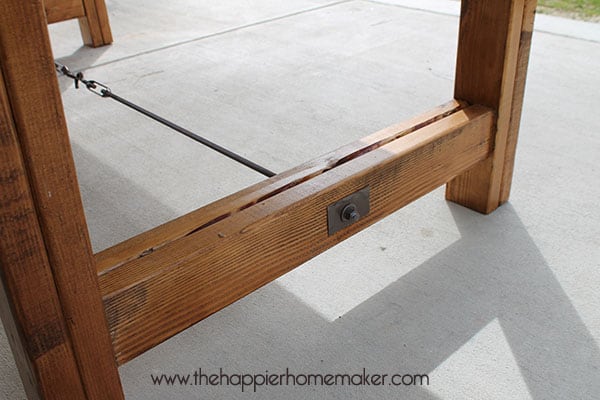








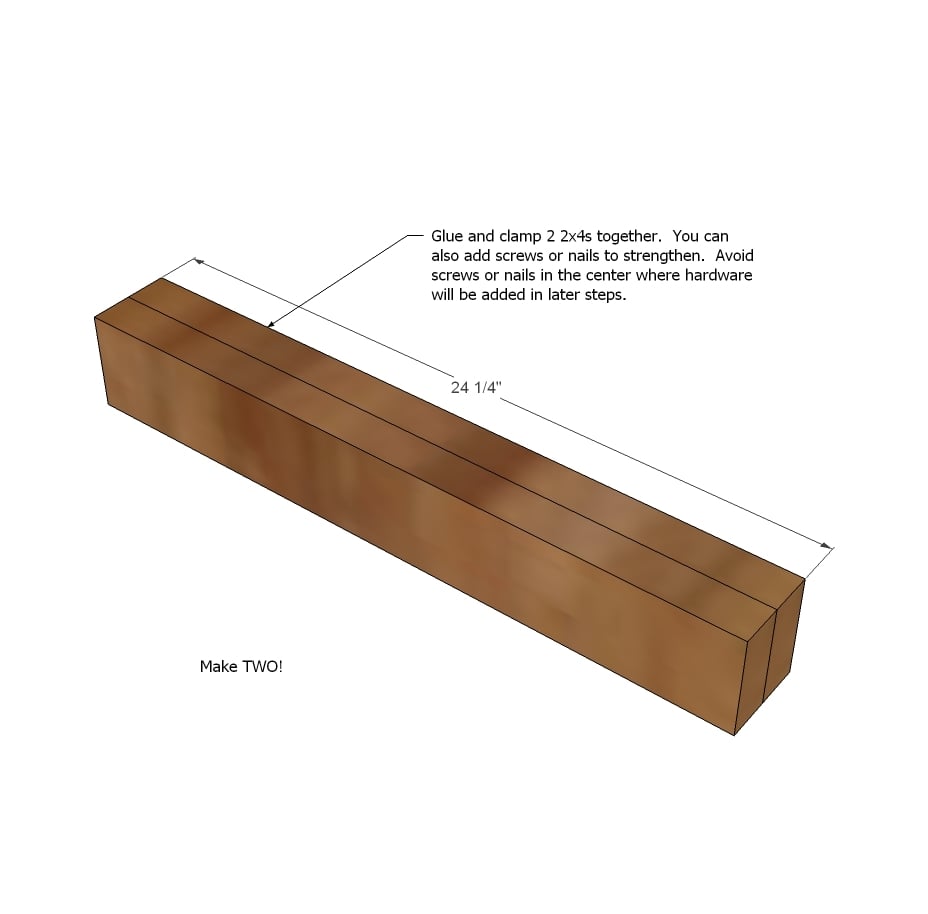
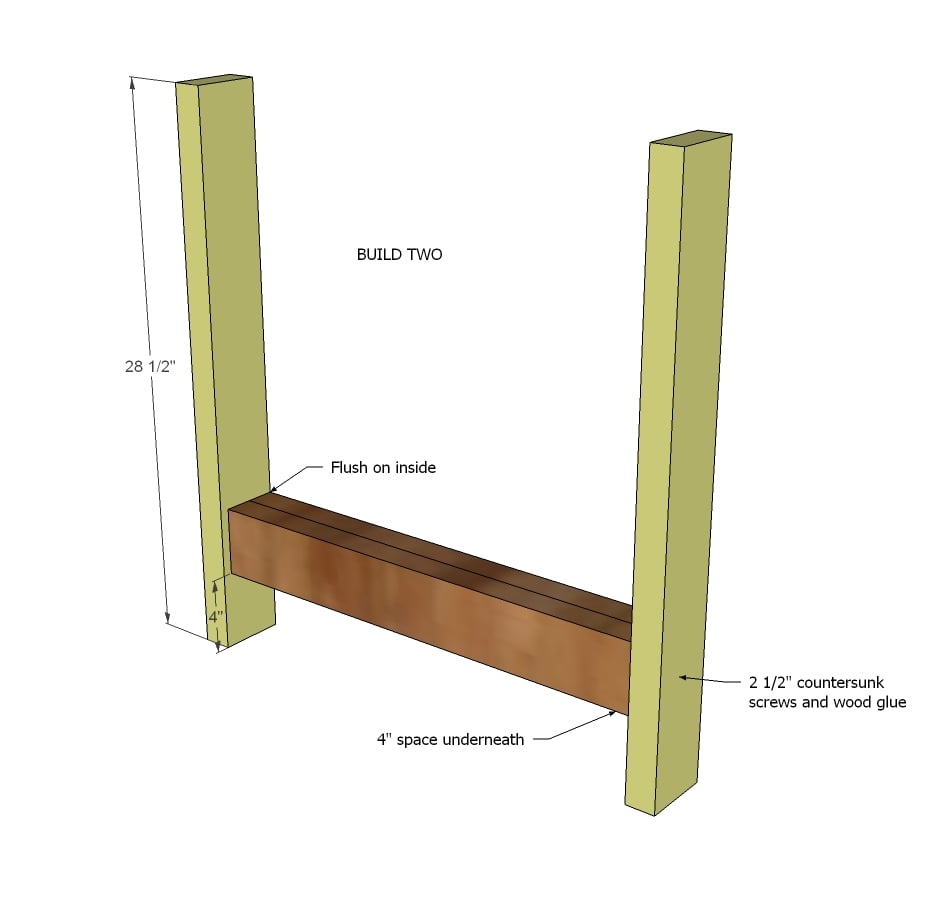
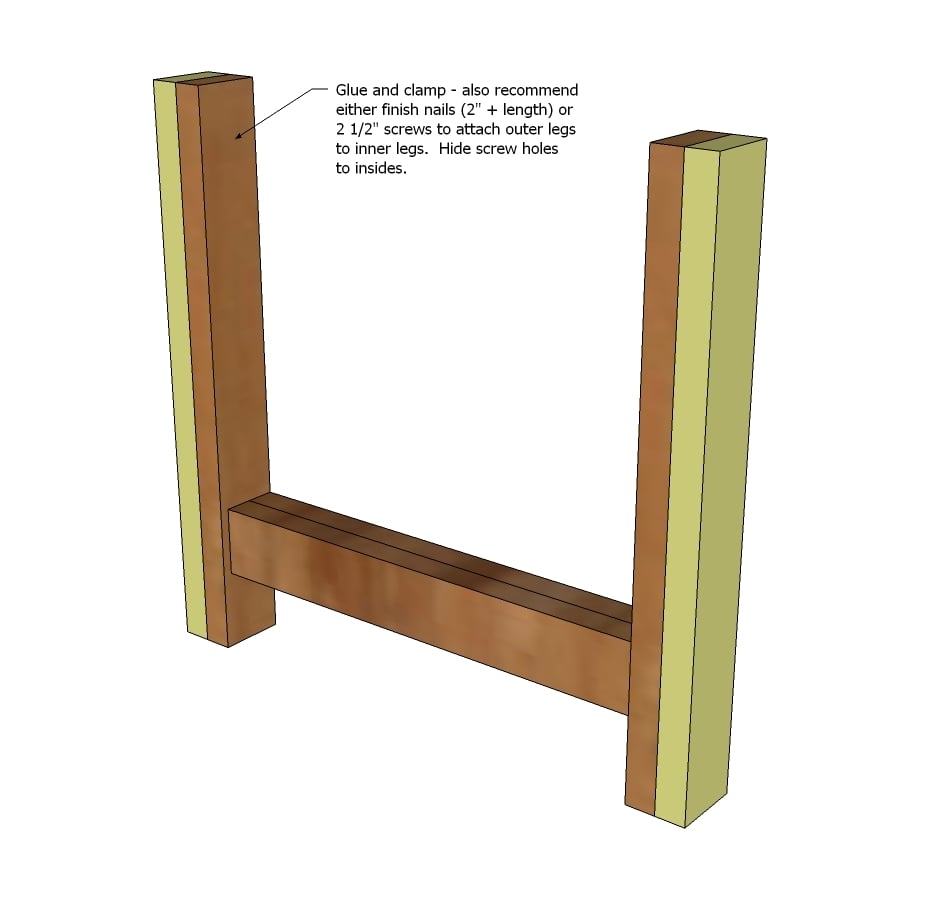
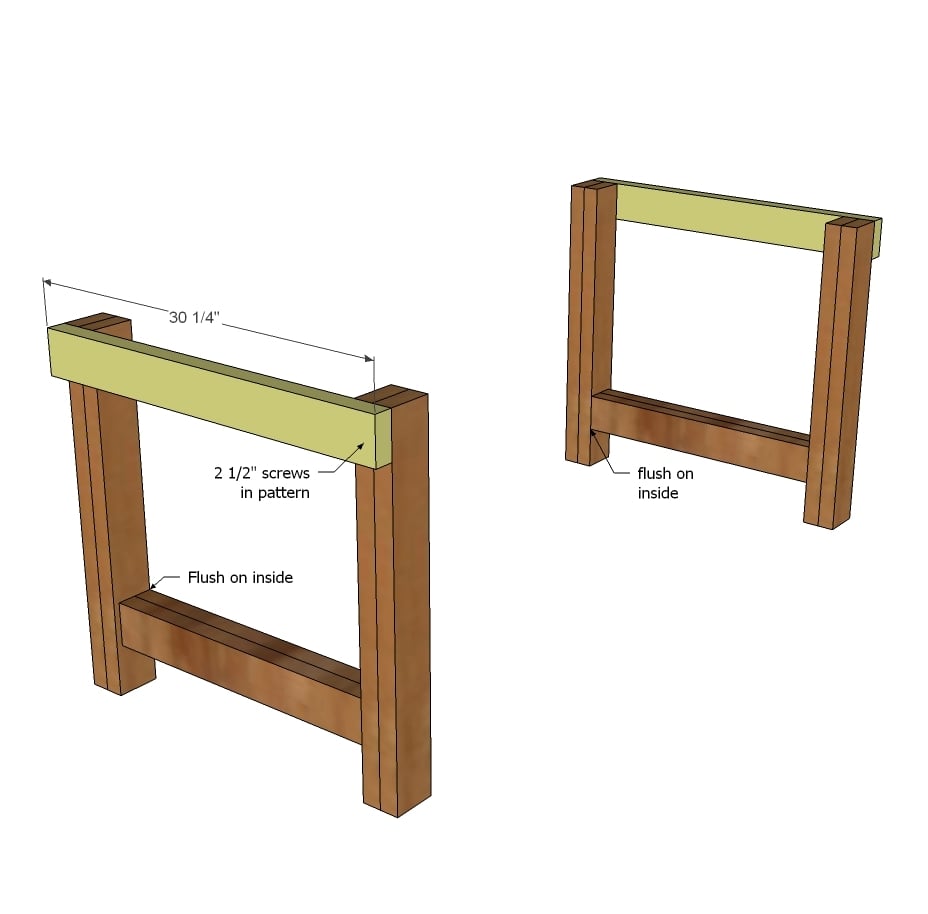




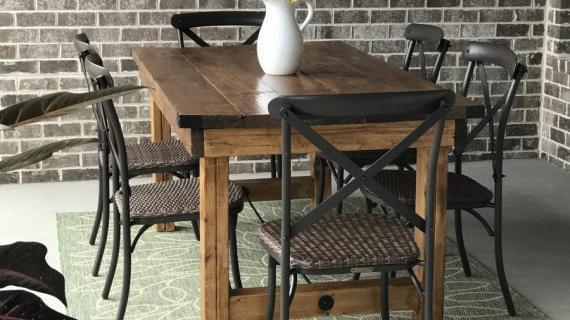


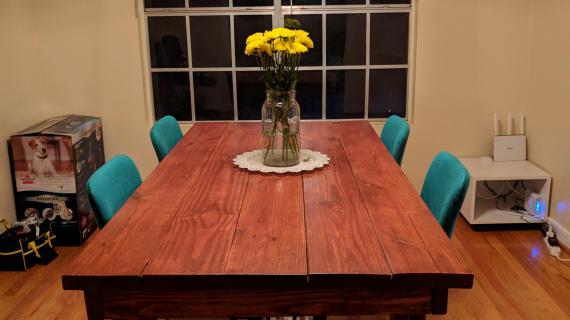
Comments
dmcarwin
Tue, 04/23/2013 - 13:08
Beautifully Done!
Great Plans! I love this table!
babysteps
Tue, 04/23/2013 - 17:02
Better than the inspiration piece!
Beautiful table, much better than the Pottery Barn version.
Chellebebuilding
Tue, 04/23/2013 - 17:36
Gorgeous
Simply gorgeous. The robust look is great for the outdoors. I may have to make one for the summer. Congrats Melissa & Hubby.
jojabis
Thu, 04/25/2013 - 17:53
the hardware
would you have to use a stretcher?? I'm just wondering since the legs seem so beefy.
Crimson0087
Fri, 06/14/2019 - 19:01
How many of your tables have…
How many of your tables have warped or cracked?
email4tina
Sun, 06/14/2020 - 17:21
Ok to make 8 feet long?
Can this table be made 8 feet long? Or would it be too heavy?
RobH2020
Fri, 08/21/2020 - 03:11
Depends what you mean by too…
Depends what you mean by too heavy. It would be pretty heavy, but two average men should be able to move it short distances.
Also depends on the wood you use. If you get mahogany it's going to be different to pine.
RobH2020
Fri, 08/21/2020 - 03:10
Thanks for these plans!!…
Thanks for these plans!! They were so incredibly helpful.
I've just finished making my own version, changing the dimensions slightly. Was 1200mm long in the end (too short in the end, should've been 1.5m but I messed up with the lumber delivery and didn't want to change it) and 820mm wide (4 x 200m boards, with 5mm gap between).
Would post a photo but not sure how!